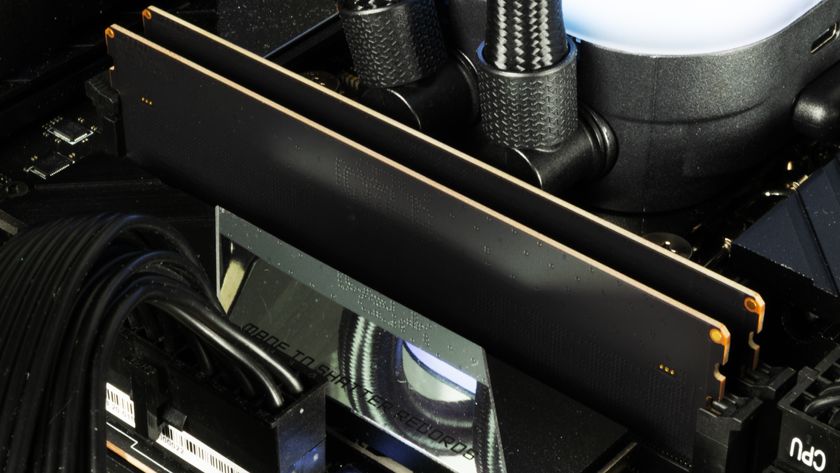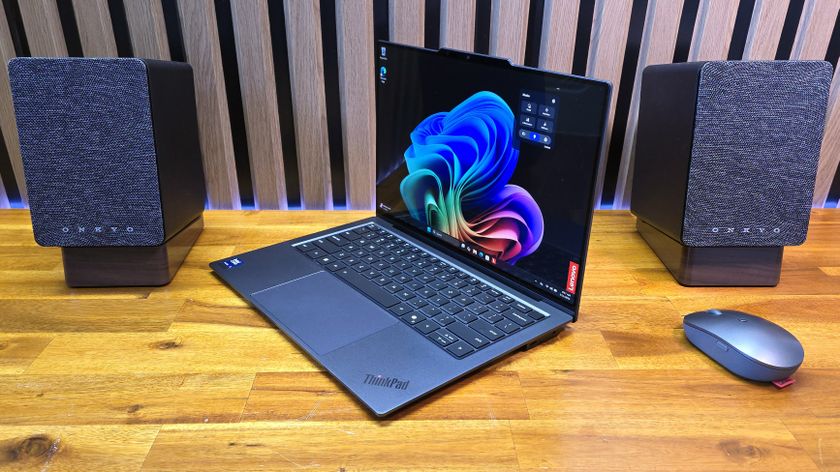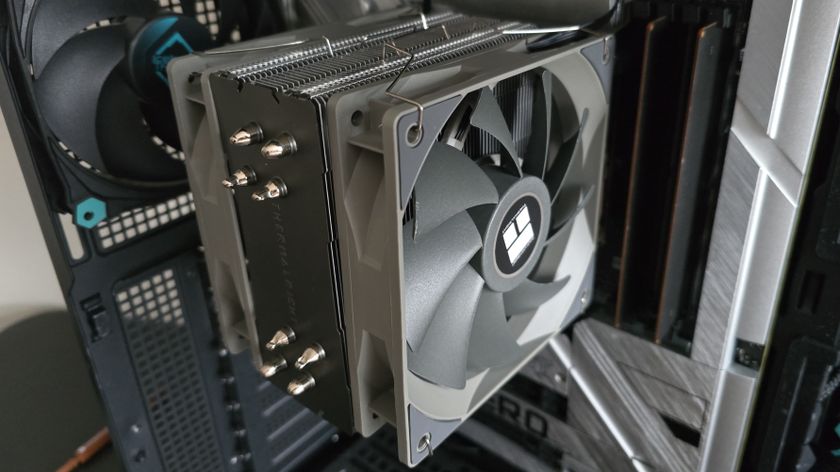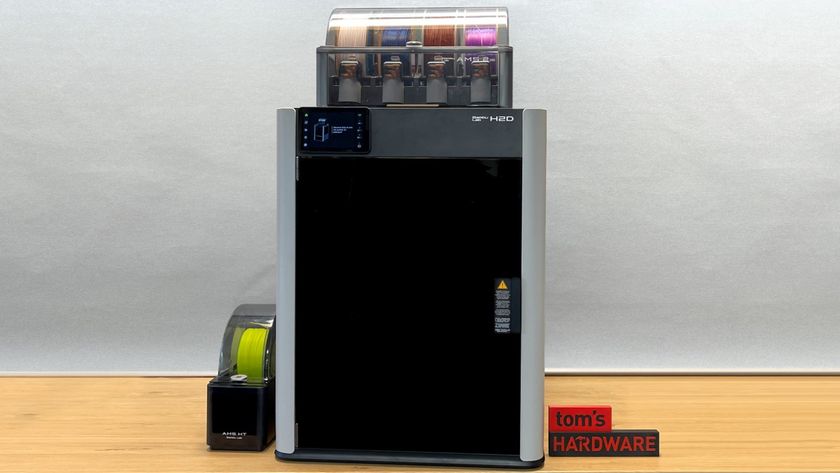Early Verdict
The Enermax Digifanless offers high performance and lots of features, but the high price tag greatly reduces the PSUs price/performance ratio. It is however, the first digital passive PSU available on the market, so there are no alternatives at the moment.
Pros
- +
Full power at 45°C • Digital control/monitoring • Zero noise • High performance • Fully modular • Individually sleeved cables • Easy to use software • Long hold-up time
Cons
- -
• Very expensive • Even higher performance was expected
Why you can trust Tom's Hardware
Introduction
Several companies have already integrated digital circuits into their PSU platforms. However, Enermax was the first to release a digitally-controlled passive unit, which, besides having high performance, is dead silent, making it appropriate for users who want to build a completely inaudible system.
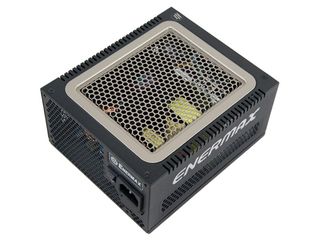
However, this combination of passive cooling and digital control boosts the production costs to high levels; at $230, the Digifanless' price is sky-high. If you decide to make the investment, you will get a fully modular PSU with high performance, good build quality and nice looks. In addition, the Digifanless is among the few passive PSUs with a capacity of more than 500W and four PCIe connectors, supporting up to two mid-end graphics cards and a high-end CPU. After taking a good look at its specifications, the only downfall seems to be the 40 °C (104 °F) rating. We expect a passive PSU to deliver its full power effortlessly at up to 50 °C (122 °F) ambient temperatures.
In a struggle to further increase performance and efficiency, several companies started to integrate digital control circuits into their platforms, which replace the older analog PSUs. Indeed, all of the digitally-controlled PSUs we have tested so far registered impressive results. Currently, the top performer in our relative performance chart is Corsair’s AX1500i, which is based on an advanced digital platform made by Flextronics.
Nonetheless, some large PSU manufacturers still haven’t jumped on the digital wagon, or they did so too late. Enermax falls into the latter category, but we should note that the company was working on its digital PSU for a long time. It seems that Enermax waited until the final result was up to its expectations and, of course, until it had the proper manufacturing line for it. Taking into account Enermax’s long history in the PSU market, we suspect that the Digifanless unit will be worthy of the company's efforts; our test results will shine more light on this.
Specifications
The PSU has Platinum-rated efficiency, though with digital control, the higher Titanium levels are within reach. We suspect that the passive design might have set the limit here. According to Enermax, the maximum operating temperature at which this unit can deliver full power is 40 °C, while the ATX spec recommends 50 degrees. It's probable that Enermax wanted to prevent users from abusing the system and thus lowered its temperature rating. Of course, that's not going to stop us from testing it at 45 °C (113 °F) under full load, as we do for every PSU we review.
Enermax lists all of the available protections, including surge and inrush current protection, which is present in almost all PSUs, but most manufacturers omit it from the specs. Because there is no fan in this PSU, we continue to the physical dimensions, where we notice a particularly deep measurement, despite the unit's relatively low capacity. Because the design is passive, Enermax's engineers wanted a larger PCB, which allows for better airflow and larger heat sinks. The 550W comes with a five-year warranty, but the price is intimidating and will probably affect this PSU's sales.
Power Specifications
| Rail | 3.3V | 5V | 12V | 12V | |
|---|---|---|---|---|---|
| Max. Power | Amps | 20 | 20 | 30 | 30 |
| Watts | 100 | 540 | |||
| Total Max. Power (W) | 550 (605 Peak) |
The single +12V rail alone can deliver almost all of the unit’s full power, which is common for PSUs that utilize modern platforms. The minor rails have a low max combined power, which will suffice for the systems that this PSU will be supporting. Finally, the 5VSB rail has the typical amperage that we see in lower-capacity PSUs nowadays.
Cables And Connectors
| Modular Cables | |
|---|---|
| ATX connector (600mm) | 20+4 pin |
| 4+4 pin EPS12V (600mm) | 1 |
| 6+2 pin PCIe (500mm) | 4 |
| SATA (460mm+150mm+150mm+150mm) | 8 |
| Four-pin Molex (455mm+150mm+150mm+150mm) / FDD (+150mm) | 4 / 1 |
A major advantage of the Enermax Digifanless is that it comes with four PCIe connectors, which, until now, only Super Flower offered on its passive unit. Most likely, a passive PSU will not be used to power a gaming PC with two high-end graphics cards installed, but this one will do just fine with two mainstream GPUs requiring a couple of auxiliary inputs each. The remaining connectors look fine, with plenty of SATA and peripheral connectors available.
Overall, cable length is satisfactory for a unit of this capacity, which most likely will be used to power a mid-range system housed in a small or medium-sized chassis and not inside a full tower. In addition, the distance between connectors, in cables that have more than one, is good, but the SATA connectors could be closer to each other. All of the connectors use individually-sleeved cables, and the 24-pin ATX and EPS connectors use thicker, 16AWG wire, which lower voltage drops but make the corresponding cables very rigid. This, in turn, can make cable management more difficult. Finally, individually-sleeved cables might look nice, but require more effort to route properly inside a case.
Power Distribution
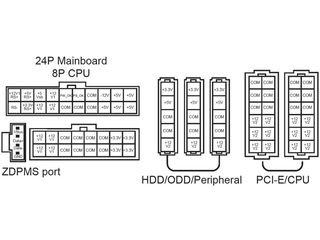
The +12V1 rail feeds the ATX and EPS connectors, while the +12V2 rail handles the peripheral and all four PCIe connectors. Power distribution separates the EPS connector from the PCIe connectors, which is something that every PSU with multiple +12V rails should do, since the above connectors are the ones that draw more power. However, in this case, we believe that +12V1 should also power the peripheral connectors, leaving the +12V2 for PCIe-only. In case the PSU is tasked with powering two graphics cards, it is better to do so by a completely independent rail that doesn’t feed any other system component. On the other hand, if you plan to power only a single GPU, then the power distribution that Enermax chose will be absolutely fine. In any case, you can easily transform the Digifanless unit into a single +12V rail through the provided software, so you won’t have to worry about the load among the rails. In our opinion, a 550W PSU should have only a single +12V rail.
MORE: How We Test Power Supplies
MORE: Who's Who In Power Supplies, 2014: Brands Vs. Manufacturers
MORE: All Power Supply Articles
MORE: Power Supplies in the Forums

Aris Mpitziopoulos is a contributing editor at Tom's Hardware, covering PSUs.
-
blackmagnum If you think buying a mid-range PSU that costs as much as an enthusiast gaming CPU or graphics card, then you have more money than sense.Reply -
PaulBags Why'd my commented get deleted? "This is a passively-cooled PSU, so you should install it with the top exhaust grille facing downward." is totally wrong advice, if you don't believe me read the warnings in the picture YOU took.Reply -
Calculatron Ironically, I have yet to try an Enermax PSU, although I really like their other products; I have an ETS-T40-TB, a whole myriad of their fans, and the Ostrog Pink case.Reply -
uglyduckling81 "This is a passively-cooled PSU, so you should install it with the top exhaust grille facing downward. If you don’t follow this advice, hot air will be trapped inside the PSU"Reply
Hot air rises. If you have the opening facing down you will be trapping hot air inside. Read your own comment "top exhaust". 'Top' means on top, 'exhaust' means expulsion of air not intake.
The PSU clearly has vents on the back and sides so I think it's a moot point either way but it's clearly a better idea to install it with the top opening facing upwards. -
nukemaster Reply
I think your post got lost(forum bug maybe), not removed. I would see if it was removed and it was not.15875927 said:Why'd my commented get deleted? "This is a passively-cooled PSU, so you should install it with the top exhaust grille facing downward." is totally wrong advice, if you don't believe me read the warnings in the picture YOU took.
I think this would depend on the case you are using to be honest.
System air will cool it.
If the power supply is at the top of your system putting its vent up will cause heat to have no place to go in many cases. Power supplies in the bottom of the case would be better served with the power supply vent face up.
The power supply has software to let you see the temperatures anyway so you can test. Tom's tests in a hotbox so it is not an actual case.
http://www.tomshardware.com/reviews/how-we-test-psu,4042.html -
Aris_Mp guys sorry for this mistake. It is with the fan grill facing upwards and not down. This is how a single word can bring doom!Reply -
Blueberries These are solid! I'd take a SeaSonic SS-520FL2 for $140 over this any day, though!Reply -
PaulBags ReplyThese are solid! I'd take a SeaSonic SS-520FL2 for $140 over this any day, though!
I have the seasonic, I love it. I prefer the modular connector layout on it too, this emermax only offers a few oddly placed plugs by comparison. The cables arn't as good though, and you don't even get enough to populate all the plugs, although it's sufficent for most scenarios for a 520w PSU.
I'd very much like to see AC cable clips become standard, I've had the ac work loose on me before when I turned a case slightly to plug something in, glad I didn't have anything important up at the time.
To anyone who _would_ want the enermax over the seasonic I'm genuinely curious as to why. It's always good to learn and/or gain perspective. -
f-14 Reply
I think your post got lost(forum bug maybe), not removed. I would see if it was removed and it was not.15875927 said:Why'd my commented get deleted? "This is a passively-cooled PSU, so you should install it with the top exhaust grille facing downward." is totally wrong advice, if you don't believe me read the warnings in the picture YOU took.
I think this would depend on the case you are using to be honest.
System air will cool it.
If the power supply is at the top of your system putting its vent up will cause heat to have no place to go in many cases. Power supplies in the bottom of the case would be better served with the power supply vent face up.
The power supply has software to let you see the temperatures anyway so you can test. Tom's tests in a hotbox so it is not an actual case.
http://www.tomshardware.com/reviews/how-we-test-psu,4042.html
page 2 second set of pictures picture number 5 what does it specifically say? where does hotair go, where does cold air go, in a fanless case your argument is excellent advice on how to waste money and start a fire. if you are running an antec 1200 with all the fans unless this psu is mounted at the top with the vents down and all the other fans are set to intake into the case you are in great shape, however that mitigates the point of having a fanless psu, you go fanless because you don't want there to be any noise, much less a hoover vacuum for a case.
i haven't read the warranty card, but i am sure it says something about keeping the psu vents facing up when mounted at the bottom of the case, when mounted on the side that would be interesting.
nice psu, i will keep it in mind for the next time a customer wants a zero or low noise build.
someday there will be a liquid cooled PSU, i laugh because of water conduction electricity, but where there is a will, there is a way to circumvent conductivity and deal with all that heat i am sure.



